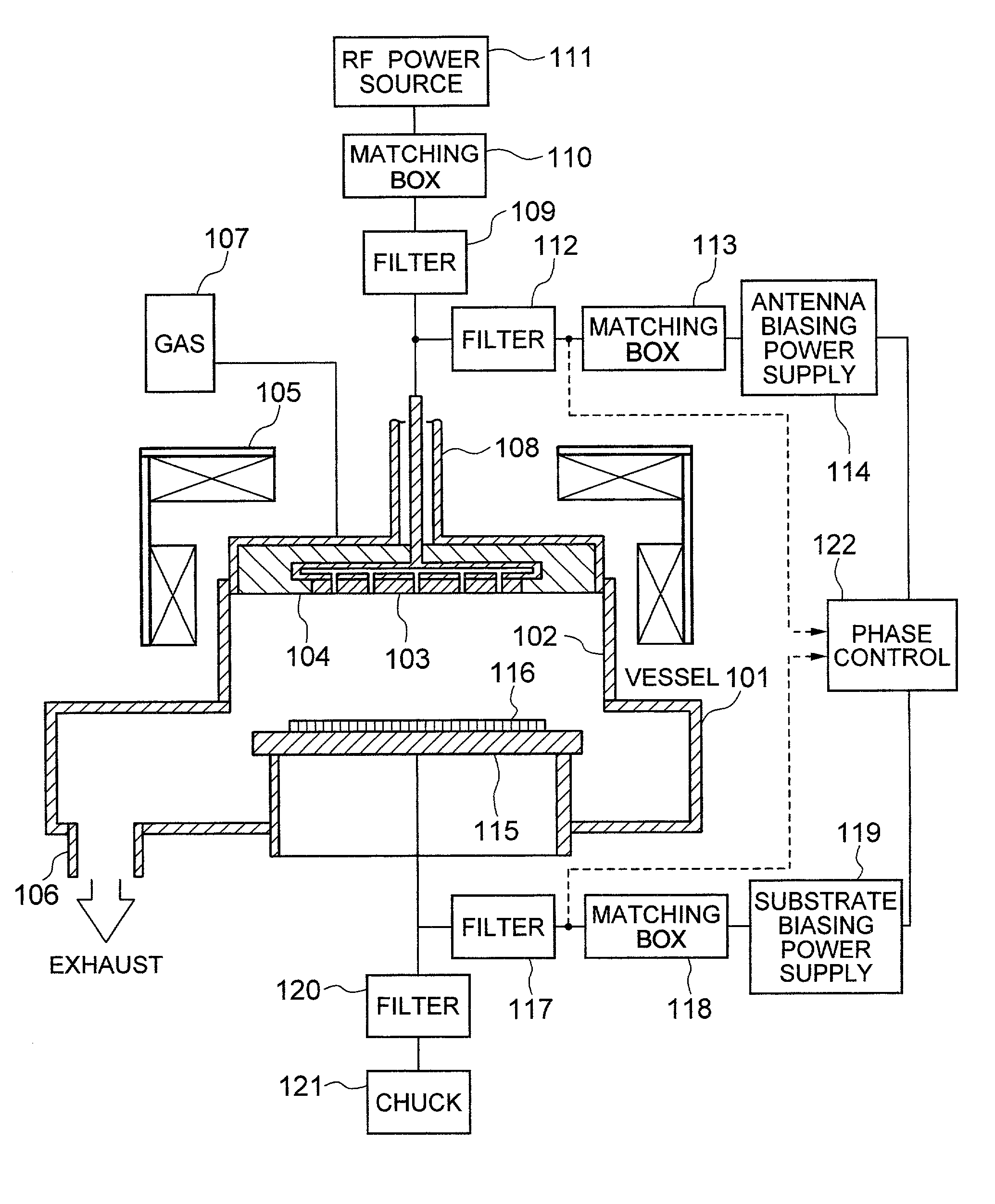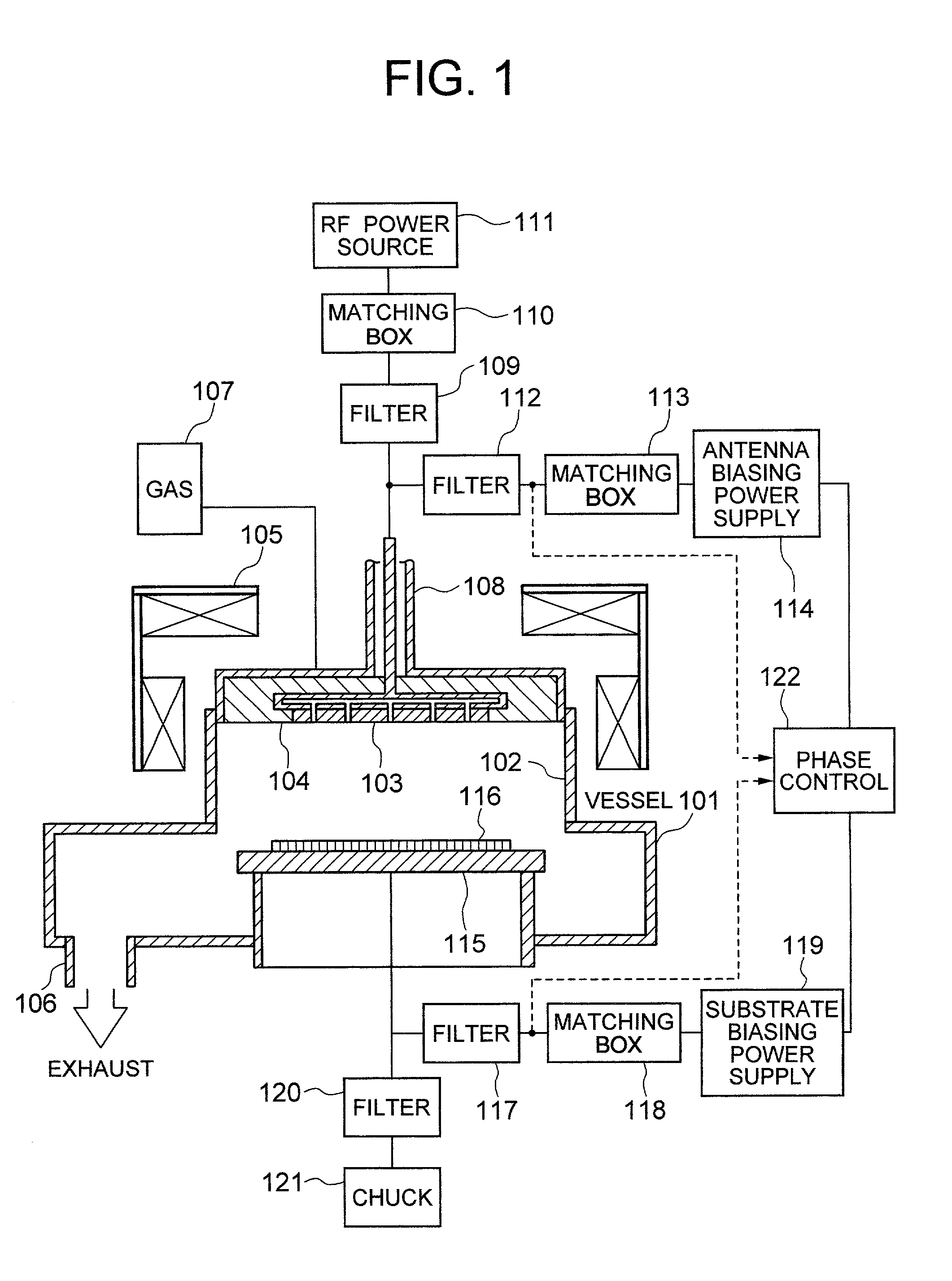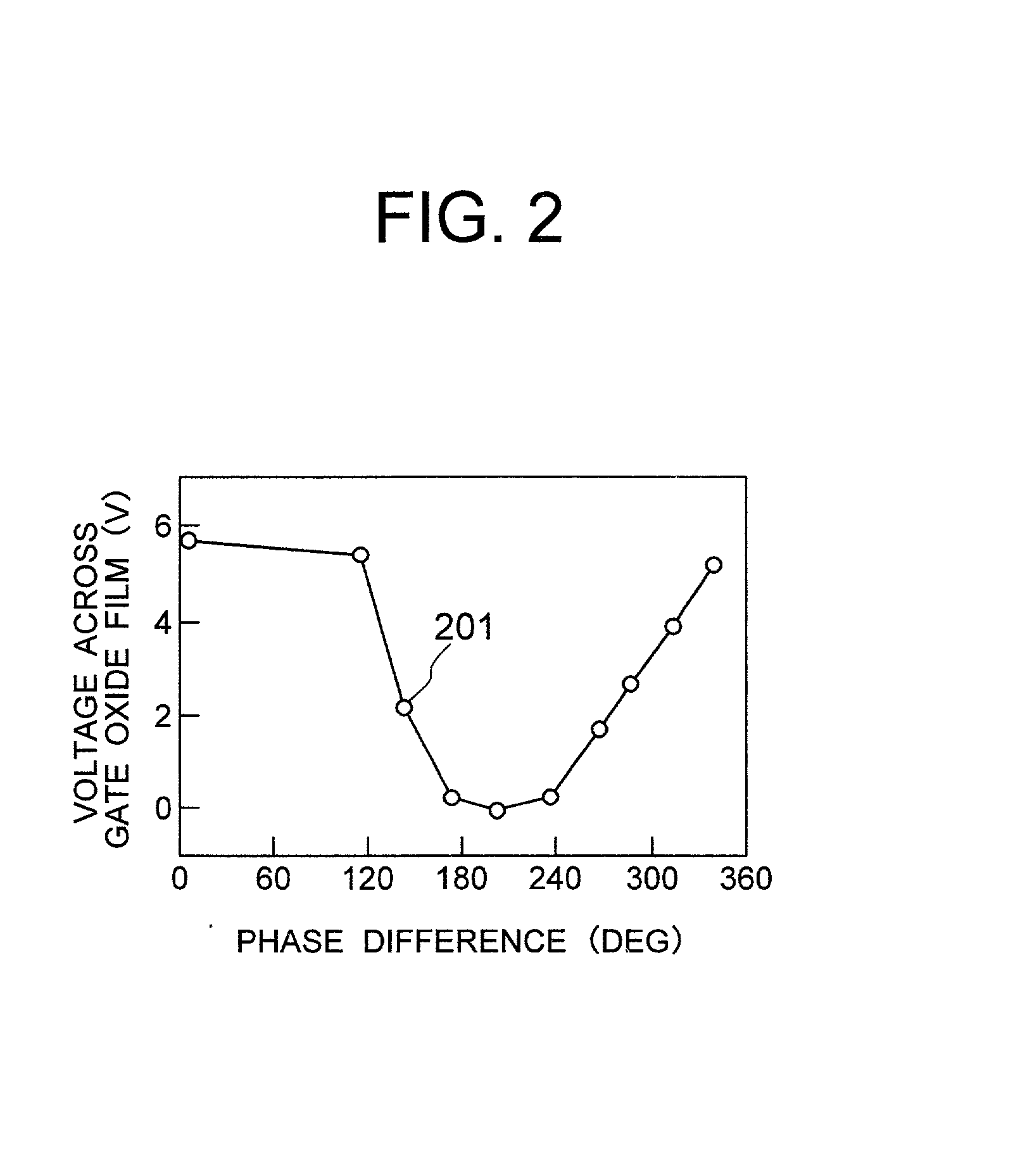Plasma processing apparatus and method with controlled biasing functions
- Summary
- Abstract
- Description
- Claims
- Application Information
AI Technical Summary
Benefits of technology
Problems solved by technology
Method used
Image
Examples
Embodiment Construction
[0047] One embodiment of the invention will be described with reference to FIGS. 1 through 5. FIG. 1 is a longitudinally cross-sectional diagram of the etching apparatus as an example of the plasma processing apparatus to which the present invention is applied. A vacuum vessel 101 has provided on the upper opening side a cylindrical process container 102, a flat-shaped antenna electrode 103 of a conductor and a dielectric window 104 through which electromagnetic waves can be transmitted, so as to hermetically seal the top opening to form a process chamber inside the container. A field-producing coil 105 is provided around the outside of the process container 102 to surround the process chamber. The antenna electrode 103 has a perforated structure for the supply of etching gas from a gas feed unit 107 connected to the antenna electrode. In addition, below the vacuum vessel 101 there is provided a vacuum exhauster (not shown) that is connected via a vacuum vent 106 to the vessel.
[0048...
PUM
| Property | Measurement | Unit |
|---|---|---|
| Angle | aaaaa | aaaaa |
| Angle | aaaaa | aaaaa |
| Electric potential / voltage | aaaaa | aaaaa |
Abstract
Description
Claims
Application Information
 Login to View More
Login to View More - R&D
- Intellectual Property
- Life Sciences
- Materials
- Tech Scout
- Unparalleled Data Quality
- Higher Quality Content
- 60% Fewer Hallucinations
Browse by: Latest US Patents, China's latest patents, Technical Efficacy Thesaurus, Application Domain, Technology Topic, Popular Technical Reports.
© 2025 PatSnap. All rights reserved.Legal|Privacy policy|Modern Slavery Act Transparency Statement|Sitemap|About US| Contact US: help@patsnap.com



